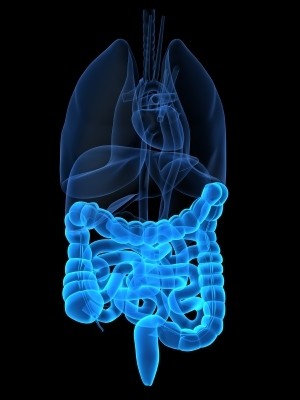Synbiotics, fiber can help treat liver-related brain dysfunction
can alter the flora in the gut, lowering its pH levels as well as
the ammonia levels in the blood and significantly reducing brain
dysfunction, a common symptom of the liver disease.
A new study published in the May 2004 issue of Hepatology has shown that fermentable fiber not only has a beneficial effect on the liver itself but also on hepatic encephalopathy, a brain dysfunction which affects many cirrhotic patients and which causes deficits in behaviour, intelligence, consciousness and neuromuscular function.
When the brain dysfunction is minor, it is called minimal hepatic encephalopathy (MHE). Since ammonia has been shown to play a key role in overt hepatic encephalopathy, treatment options for MHE have also focused on reducing ammonia levels in the body.
The latest research on the effects of synbiotics (a combination of prebiotics and prebiotics) and fermentable fiber (such oat bran) on gut flora and MHE was carried out by a collaborative research team from Beijing Youan Hospital and Capital University of Medical Sciences, China, University College London, UK and the Prince of Wales Hospital, Sydney, Australia.
The pilot, placebo-controlled study of 55 individuals with MHE saw 20 patients treated for 30 days with a daily symbiotic preparation, while 20 others took fermentable fibers for 30 days. The remaining 15 received a placebo treatment for 30 days. After this 30 day period, all the patients were re-screened for MHE.
The researchers also assessed gut flora in fecal samples at day one, day 30, and day 44. They compared their findings with the gut flora of 20 normal healthy volunteers.
After 30 days of treatment, 50 per cent of patients treated with either the synbiotic preparation or fermentable fibre showed a reversal of MHE, compared to a 13 per cent reversal rate in the placebo group. Furthermore, patients in both treatment groups had a lower fecal pH at day 30, along with significantly reduced levels of ammonia in their veins, and significantly reduced serum endotoxin levels.
Both treatments appeared to have significantly altered the cirrhotic patients' gut flora. At the outset of the study, the cirrhotic patients with MHE were found to have significant fecal overgrowths of E. Coli and Staphylococcus. Treatment with the synbiotic preparation reduced these levels to those of the healthy controls, while counts of non-urease producing Lactobacillus were significantly increased.
Treatment with fermentable fiber alone increased non-urease producing Bifidobacterium spp and significantly reduced overgrowths of E. Coli and Fusobacterium spp. Treatment with the placebo did not alter the counts of any of the gut flora assessed.
"Our study is the first to examine the impact of synbiotics and fermentable fiber alone on MHE and other aspects of hepatic function in patients with cirrhosis," the authors claimed. "We conclude that treatment with synbiotics or fermentable fiber alone is an alternative to use of non-absorbable disaccharides, such as lactulose, for the management of MHE in patients with cirrhosis. Significant reductions in viable counts of potentially pathogenic gut flora occur with both treatments."
In an accompanying editorial in the same issue of Hepatology, Drs Steven F. Solga and Anna Mae Diehl of Johns Hopkins University discuss the "impressive and exciting improvements in HE with both synbiotic therapy and fiber alone". They note that it is even more exciting that altering the gut flora may improve not only HE but also liver disease.
The researchers "have made a major contribution to the application to gut flora therapy to humans with liver disease," they wrote. "We expect this research to stimulate further interest in the study of gut flora therapy and the 'gut-liver' axis, because the liver does, indeed, care about the gut."












